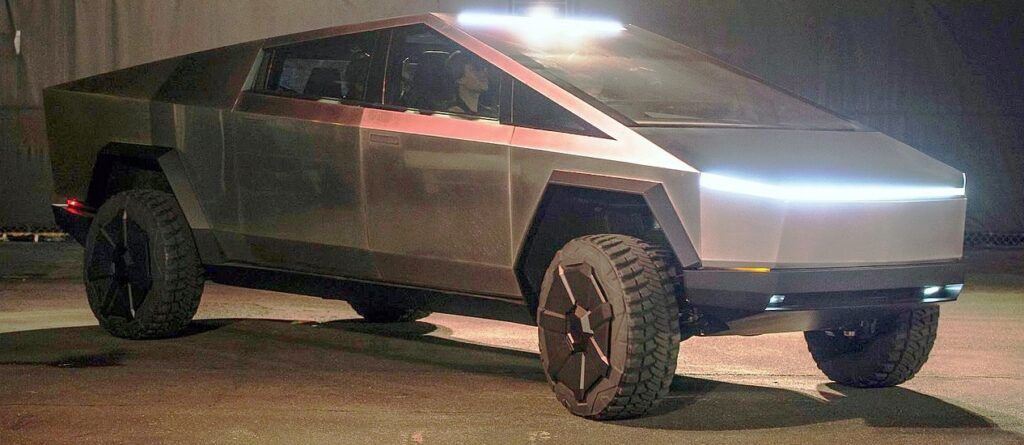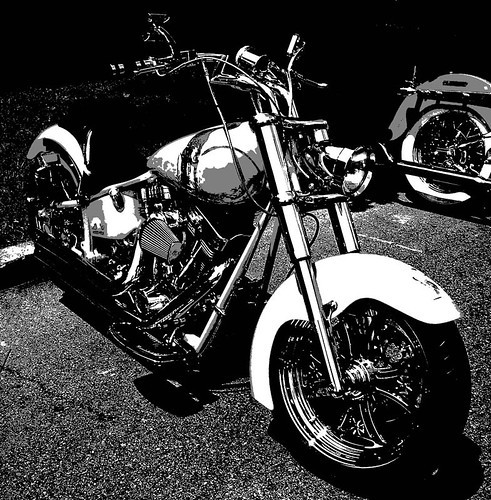
Alright, road warriors and fellow commuters, let’s get real for a minute. While we all like to think we’re the next F1 superstar or at least a perfectly competent driver, the truth is, the roads are filled with all sorts of personalities, and sometimes, those personalities manifest in… let’s call them ‘interesting’ driving habits. It’s perfectly okay if you’re not a driving prodigy – modern cars are practically magic, making even the most challenging commutes feel like a breeze. But what happens when the car itself starts to get a rep for attracting drivers who aren’t quite so breezy? We’re talking about the ‘rude’ cars, the ones that seem to magnetize all the questionable road etiquette.
We put the question out there: ‘What cars really do have the worst drivers?’ And oh boy, did you deliver! We didn’t turn to dry statistics or stuffy reports for this one; instead, we tapped into the collective wisdom (and occasional exasperation) of everyday drivers just like you. The answers we got were golden, painting a hilarious, sometimes frustrating, but always relatable picture of the vehicles that have earned themselves a spot on the ‘terrible driver image’ list. So, if you’ve ever found yourself muttering under your breath about someone’s questionable lane change or blinker-free maneuvers, you’re about to feel seen.
So, buckle up, buttercups, because we’re about to embark on a lighthearted, no-holds-barred journey through 12 cars that, according to the internet, might just be giving their drivers a bit of a ‘rude’ reputation. Whether it’s the car’s design, a common stereotype, or just sheer anecdotal evidence, these vehicles have somehow become synonymous with behaviors that make us all want to give them a wide berth. Let’s dive in and see if your daily commute nightmares are about to get a name and a license plate (just kidding, mostly!).
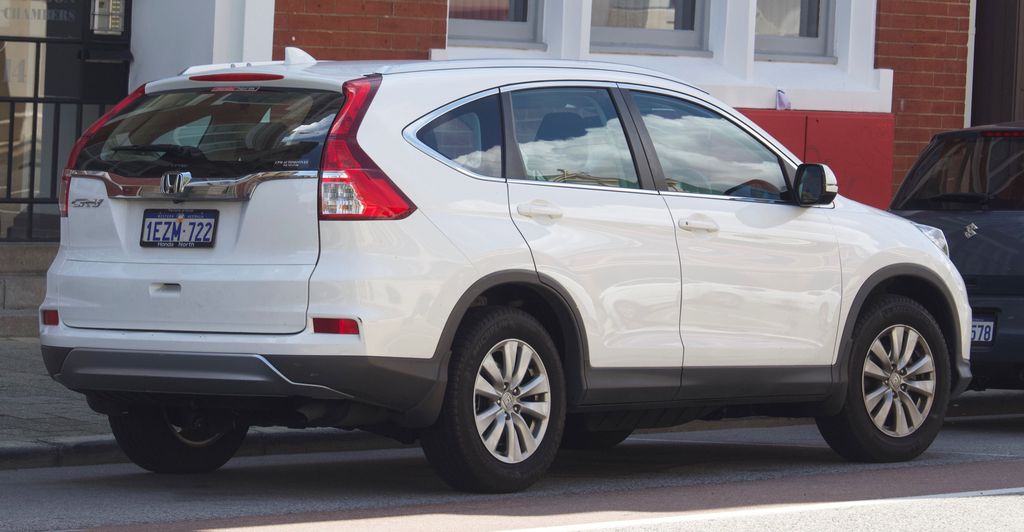
1. **Honda CR-V**
Who would’ve thought a Honda CR-V, the beloved family SUV, could land itself on a list of ‘rude’ cars? It’s a vehicle known for its practicality, reliability, and spacious interior, making it a go-to for many. Yet, according to some drivers, the CR-V seems to be a magnet for a very specific type of road behavior: the slow, unaware driver.
One particularly poignant comment came from a reader named ‘hammerheadfistpunch,’ who noted, “Bad is subjective, but I do know with a high level of certainty what make and model of car will likely be holding me up under the speed limit with no clue of what traffic is doing around them.” This vivid description paints a picture of a driver seemingly oblivious to their surroundings, creating a rolling roadblock for everyone else. It’s less about aggressive rudeness and more about an exasperating lack of awareness.
It’s a curious paradox, really. The Honda CR-V is lauded for its wide visibility and features like blind-spot monitoring and Real-Time AWD, which are all designed to make driving easier and safer. You’d think these features would empower drivers to be more confident and engaged. Instead, the perception suggests some CR-V drivers are content to cruise along, perhaps a little too relaxed, without quite grasping the rhythm of the road. It just goes to show, sometimes, the most unassuming vehicles can harbor the most perplexing driving habits.
Read more about: Unlocking the Secrets of Auto Theft: The 14 Most Common Ways Expensive Sports Cars and High-Value Vehicles Vanish in the U.S.
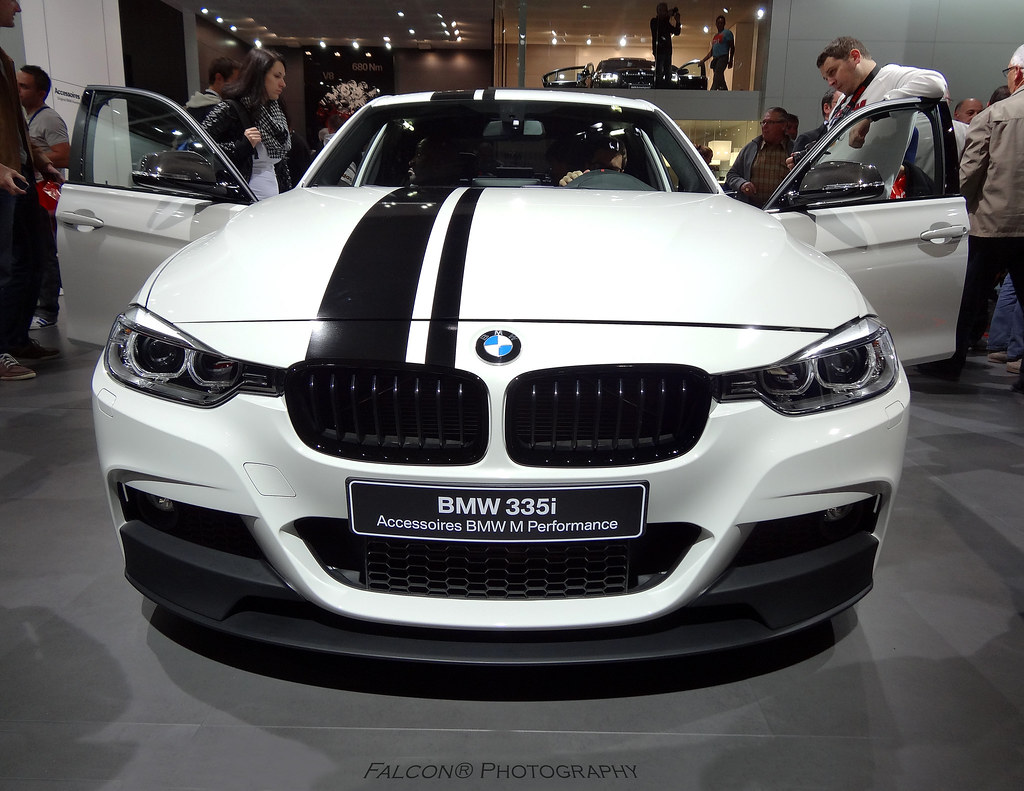
2. **BMW**
Ah, BMW. The brand synonymous with luxury, performance, and… the infamous lack of blinker usage. If you’ve ever driven on a busy highway, chances are you’ve encountered the classic BMW driver who makes a sudden lane change without so much as a flicker from their turn signal. It’s almost become a global meme, a running joke that transcends borders.
One commenter, ‘noturbestfriend,’ summed it up with an almost frantic plea: “BMW BMW BMW BMW BMW BMW BMW BMW BMW BMW BMW. Use the damn blinkers!” The repetition truly emphasizes the widespread frustration this particular habit causes. It’s not just a minor annoyance; it’s a perceived disregard for basic road courtesy and safety, leaving other drivers guessing and reacting at the last minute.
One might wonder, is it a factory default? A secret code only BMW owners understand? Or perhaps, as some speculate, the sheer thrill of driving such a powerful machine simply makes indicators seem… optional? Whatever the reason, the stereotype of the blinker-averse BMW driver persists, firmly cementing its place on the ‘rude’ car list. It’s a testament to how one consistent behavior can define an entire brand’s driver image in the eyes of the public.
Read more about: The Curated Canvas: Inside Ralph Lauren’s Exclusive Garage of Vintage Race Cars and Modern Exotic Hypercars
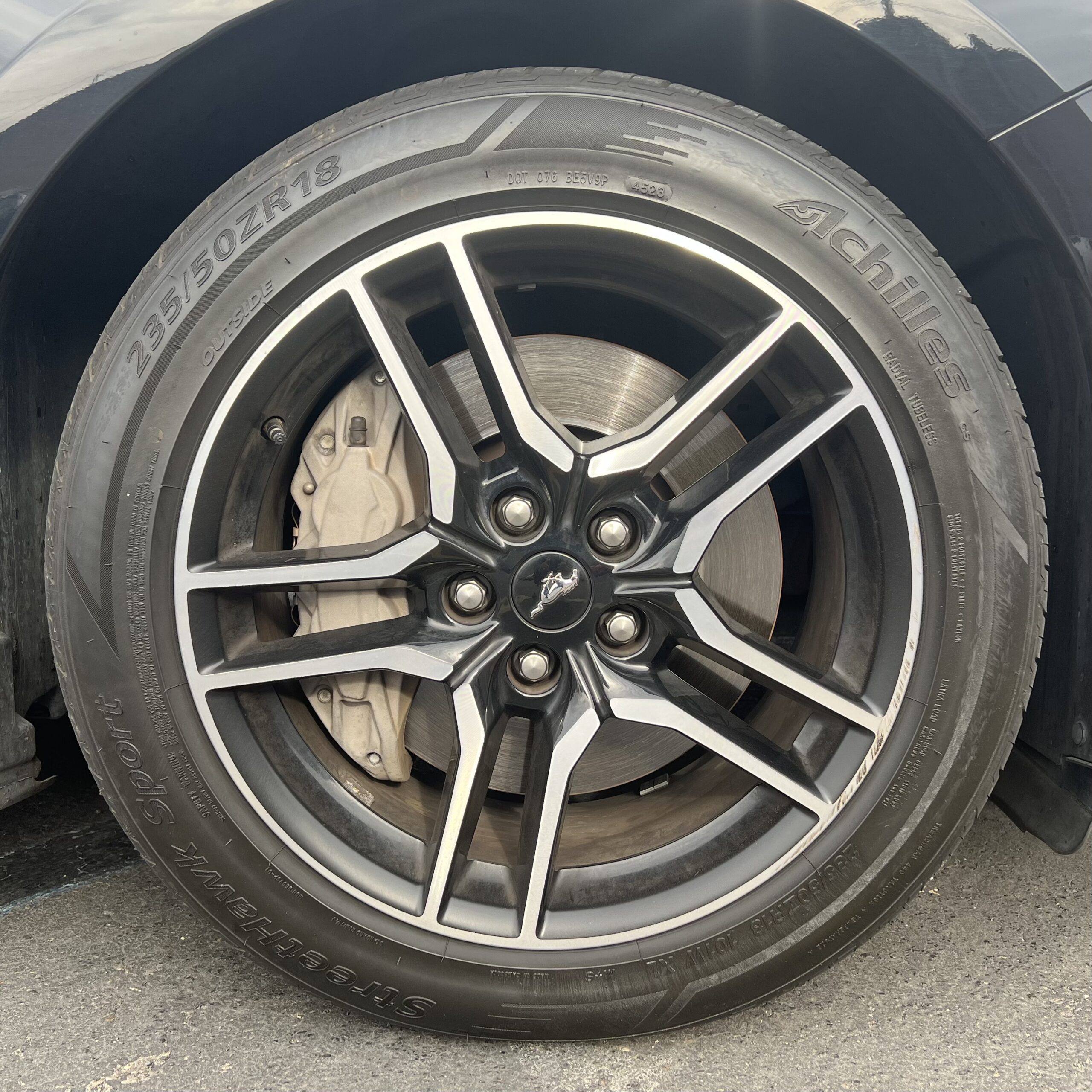
3. **Ford Mustang**
The Ford Mustang – a car that embodies American muscle, freedom, and a whole lot of horsepower. It’s built for exhilaration, for those who love the roar of an engine and the thrill of the open road. But sometimes, that love for exhilaration can translate into driving behaviors that raise a few eyebrows, and not always in a good way.
As ‘buckfiddiousagain’ so astutely observed, “I wanna say Mustangs, but it’s not the car, it’s the driver.” This comment hits the nail on the head, highlighting a common sentiment that it’s less about the vehicle itself and more about the personality it attracts. The commenter elaborated, “if you honestly believe you are a superior driver and you aren’t a pro, you are probably the one causing trouble, because you KNOW your superior driving skills and reflexes make you a super driver.” This speaks volumes about a certain overconfidence behind the wheel.
This perceived superiority often manifests in actions like cutting through traffic aggressively or exceeding the speed limit by a significant margin. The commenter further pointed out, “If you were a superior driver, you wouldn’t be cutting through traffic or doing 30 mph over the speed limit.” It’s a playful but firm reminder that while a Mustang might make you *feel* like a race car driver, public roads require a different kind of skill – the ability to share nicely. The thrill of the car often seems to override common sense, leading to a ‘rude’ reputation for its drivers.
Car Model Information: 2016 Ford Mustang GT
Name: Ford Mustang
Caption: 2018 Ford Mustang GT 5.0
Aka: Ford T5 (Germany)
Manufacturer: Ford Motor Company
Production: March 1964 – present
ModelYears: 1965–present
Class: Unbulleted list
BodyStyle: Unbulleted list
Layout: Front-engine, rear-wheel-drive layout
Categories: 1970s cars, 1980s cars, 1990s cars, 2+2 coupés, 2000s cars
Summary: The Ford Mustang is an American automobile manufactured and marketed by Ford since 1964, as Ford’s longest nameplate in continuous production. Currently in its seventh generation, it is the fifth-best selling Ford car nameplate. The namesake of the “pony car” automobile segment, the Mustang was developed as a highly styled line of sporty coupes and convertibles derived from existing model lines, initially distinguished by its pronounced “long hood, short deck” proportions.
Originally predicted to sell 100,000 vehicles yearly, the 1965 Mustang became the most successful vehicle launch since the 1927 Model A. Introduced on April 17, 1964 (16 days after the Plymouth Barracuda), over 400,000 units were sold in its first year; the one-millionth Mustang was sold within two years of its launch. In August 2018, Ford produced the 10-millionth Mustang; matching the first 1965 Mustang, the vehicle was a 2019 Wimbledon White convertible with a V8 engine.
The success of the Mustang launch led to multiple competitors from other American manufacturers, including the Chevrolet Camaro and Pontiac Firebird (1967), AMC Javelin (1968), and Dodge Challenger (1970). It also competed with the Plymouth Barracuda, which was launched around the same time. The Mustang also had an effect on designs of coupes worldwide, leading to the marketing of the Toyota Celica and Ford Capri in the United States (the latter, by Lincoln-Mercury). The Mercury Cougar was launched in 1967 as a unique-bodied higher-trim alternative to the Mustang; during the 1970s, it included more features and was marketed as a personal luxury car.
From 1965 until 2004, the Mustang shared chassis commonality with other Ford model lines, staying rear-wheel-drive throughout its production. From 1965 to 1973, the Mustang was derived from the 1960 Ford Falcon compact. From 1974 until 1978, the Mustang (denoted Mustang II) was a longer-wheelbase version of the Ford Pinto. From 1979 until 2004, the Mustang shared its Fox platform chassis with 14 other Ford vehicles (becoming the final one to use the Fox architecture). Since 2005, the Mustang has used the D2C platform, unique to the Mustang.
Through its production, multiple nameplates have been associated with the Ford Mustang series, including GT, Mach 1, Boss 302/429, Cobra (separate from Shelby Cobra), and Bullitt, along with “5.0” fender badging (denoting 4.9 L OHV or 5.0 L DOHC V8 engines).
Get more information about: Ford Mustang
Buying a high-performing used car >>>
Brand: Ford Model: Mustang
Price: $29,261 Mileage: 24,710 mi.
Read more about: The Unforgettable Missteps: 14 Vehicle Brands That Saw Their Trust Shatter in a Single Moment
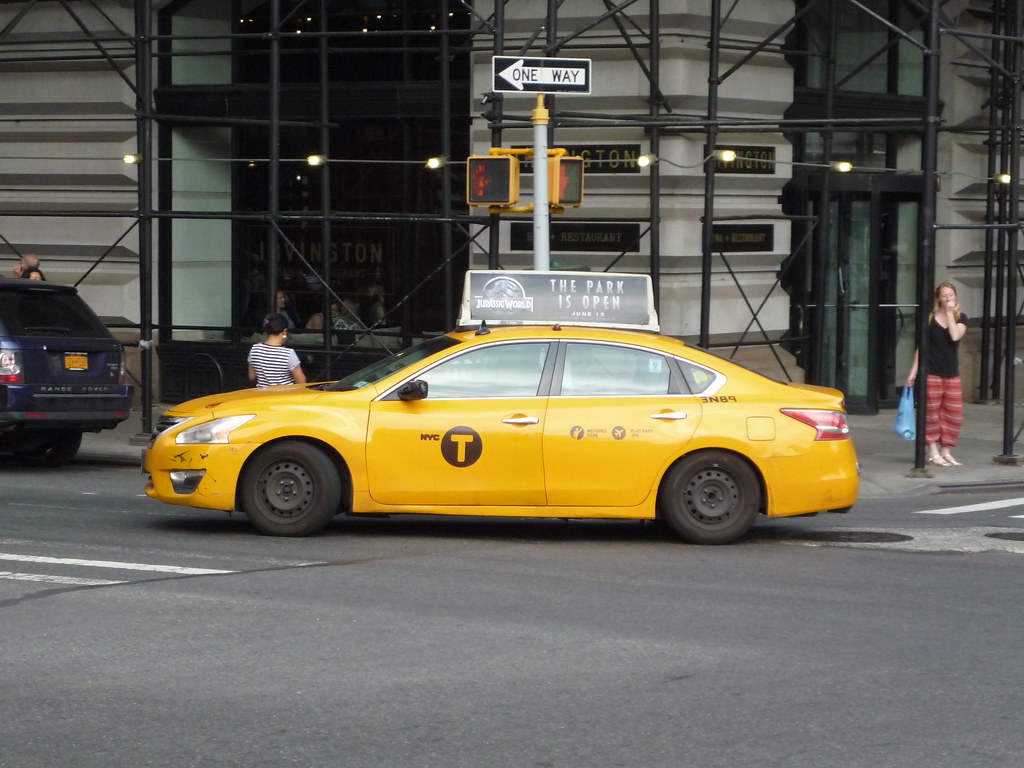
4. **Nissan Altima**
If you spend any time scrolling through social media or driving on American roads, you’ve probably heard whispers of ‘Big Altima Energy.’ This phrase has become a cultural phenomenon, almost a shorthand for a specific kind of chaotic, unpredictable driving. The Nissan Altima, an otherwise unassuming sedan, has somehow become the poster child for this unique brand of road behavior.
The genesis of this phenomenon was perfectly captured by ‘klone121’ who simply stated, “Nissan Altima. Just type in Big Altima Energy.” While the context doesn’t explicitly define ‘Big Altima Energy,’ the surrounding comments paint a pretty clear picture. It’s often associated with erratic driving, questionable vehicle maintenance, and a general air of ‘anything goes’ on the road. It implies a driver who is perhaps a little too comfortable pushing boundaries.
This ‘energy’ is further reinforced by observations like those from ‘golfball,’ who mentioned seeing “10-year-old Nissan Altimas with tattered temp tags that have probably been invalid for over a year.” Adding to the unease, ‘jsinclair3939’ expressed, “Nothing makes me more nervous than driving near a clapped out Altima. Whatever happens, you know they don’t have insurance.” These comments combine to create an image of Altima drivers as frequently uninsured, reckless, and driving vehicles that are, shall we say, not always in tip-top shape. It’s a recipe for both frustration and genuine concern on the road.
Read more about: Remember These? 13 Rides That Went From Sought-After to Stale.
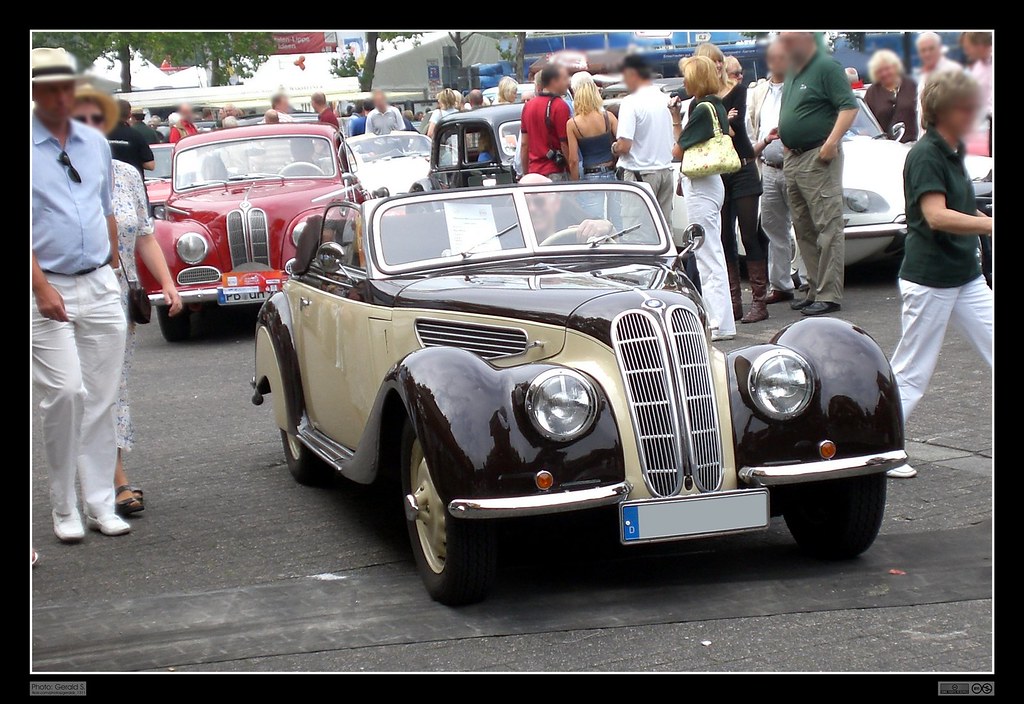
5. **Beige Sedans & Certain Hybrids/EVs**
Now, this one might feel a little unfair, because really, what does the color of your car have to do with your driving? Well, according to our informal survey, quite a lot, especially when that color is beige! It seems that certain vehicles, particularly those in less vibrant hues, along with some popular hybrids and EVs, have become associated with drivers who are perceived as… disengaged.
‘leftylooseygoosey’ put it eloquently: “Tesla Model Y and Toyota Prius are obvious answers, but I think an underrated answer is anyone in a beige Camry, or really any beige sedan. This is the quintessential car for people who don’t want to drive but need a car.” The core idea here is that if you don’t care much about the aesthetics of your vehicle, perhaps you don’t care much about the *act* of driving it, either. This translates into a perception of driving as a chore, rather than an active engagement.
This perceived lack of enthusiasm often leads to what ‘gusdabomba’ categorized as “pure incompetence and slow speed,” specifically citing “beige or light gold anything, but specifically slightly aged Camry and Lexus ES models.” These drivers are seen as moving too slowly, being unaware of faster traffic, and generally camping in the left lane without a care. It’s not necessarily aggressive ‘rudeness,’ but a passive one that can be just as infuriating, as it disrupts the flow of traffic and often requires other drivers to take evasive action. It seems an indifference to car color might just correlate with an indifference to driving etiquette.
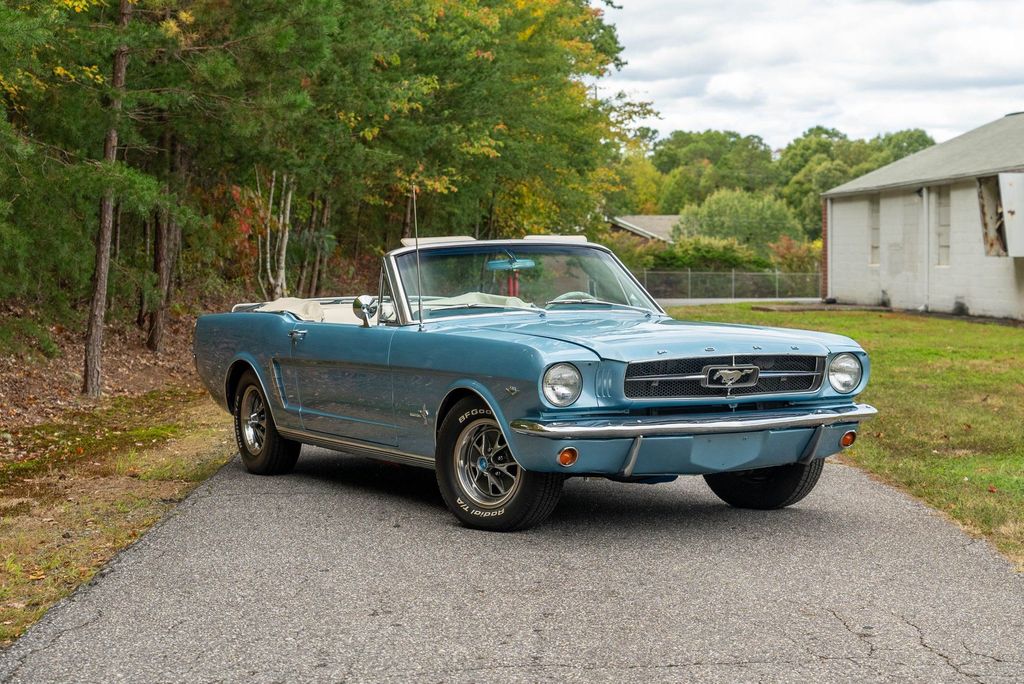
6. **Ram Trucks**
Alright, let’s talk about big trucks. Specifically, Ram Trucks, which seem to attract a rather… assertive style of driving. There’s something about the sheer size and commanding presence of a pickup truck that, for some drivers, appears to translate into a feeling of dominance on the road. And this often plays out in ways that other motorists find profoundly ‘rude.’
‘golfball’ observed this trend firsthand, noting, “The cars I see most often weaving in and out of traffic, tailgating, and otherwise creating mischief tend to be Ram trucks and 10-year-old Nissan Altimas…” This highlights a pattern of aggressive maneuvers – cutting through lanes, getting uncomfortably close to the car in front – behaviors that clearly fall under the umbrella of ‘rude’ driving. It’s less about incompetence and more about an active disregard for others’ space and safety.
This sentiment was echoed and expanded upon by ‘barada-nikto-byotch,’ who broadly discussed how “a trucks height that tends to bring out a kind of ish behavior in some.” The complaint specifically targeted tailgating, exacerbated by the blinding glare of newer, brighter headlights positioned right at rearview mirror height. It’s a potent combination: an intimidating vehicle, aggressive driving, and visual discomfort for those unfortunate enough to be in front. The perception is that these drivers leverage their vehicle’s size to dictate the pace and flow, often at the expense of everyone else’s comfort and peace of mind on the road.
Alright, fellow road-trippers and daily commuters, we’ve navigated through the first half of our ‘rude’ car lineup, and if you thought the road rage ended there, think again! We’re back to shine a spotlight on six more vehicles whose drivers frequently leave us scratching our heads, muttering under our breath, or just plain trying to keep a safe distance. From the surprisingly perplexing habits of some popular sedan owners to the sometimes-arrogant maneuvers of performance car enthusiasts and the puzzling antics of electric vehicle pilots, this next batch is just as wild, wacky, and totally relatable.
Let’s dive back into the asphalt jungle and discover which rides are rounding out our infamous list, all based on the hilarious, frustrating, and often too-true observations of drivers just like you. Get ready for some serious head-nodding agreement, because if you haven’t encountered these specific brands of road etiquette (or lack thereof), you probably will soon!
Car Model Information: 2023 RAM ProMaster 2500 High Roof
Name: Ram Trucks
Logo: Ramchryslerlogo.png
FormerName: Dodge Ram
Type: division (business)
LocationCity: Auburn Hills, Michigan
Foundation: [object Object]
AreaServed: North America, Middle East, Latin America, Europe, Southeast Asia, Oceania, and Angola
Industry: Automobile
Predecessor: Graham Brothers,Fargo Trucks,Plymouth (automobile)#Plymouth trucks
KeyPeople: Tim Kuniskis (CEO)
Products: Truck
Parent: Chrysler
Homepage: https://www.ramtrucks.com/|ramtrucks.com
Categories: 2010 establishments in Michigan, All Wikipedia articles written in American English, All articles with unsourced statements, Articles with short description, Articles with unsourced statements from July 2024
Summary: Ram Trucks (stylized as RAM) is an American brand of light to mid-weight pickup heavy duty trucks and other commercial vehicles, and a division of Stellantis North America (previously Chrysler Group LLC). It was established in a spin-off of Dodge in 2009 using the name of the Ram pickup line of trucks. Ram Trucks’ logo was originally used as Dodge’s logo. New series Ram 1500 pickups are made at Sterling Heights Assembly in Sterling Heights, Michigan. Since its inception, the brand has used the slogan “Guts. Glory. Ram.”
Get more information about: Ram Trucks
Buying a high-performing used car >>>
Brand: Ram Model: Trucks
Price: $63,980 Mileage: 2,708 mi.
Read more about: Seriously, Where Did They Go? A Nostalgic Deep Dive into 12 Discontinued Drinks That Vanished From Our Tables
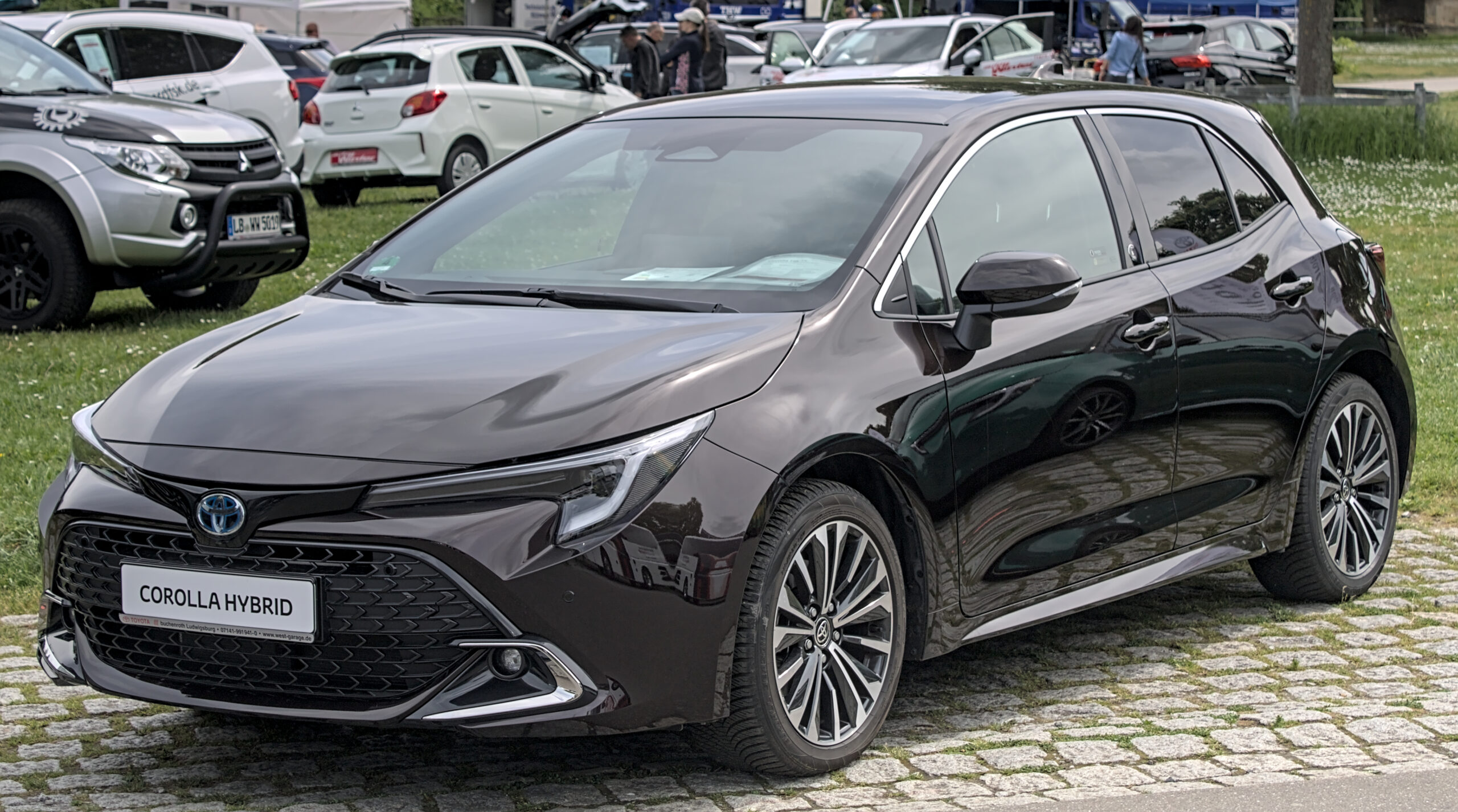
7. **Toyota Corolla**
Hold up, the Toyota Corolla? The ultimate symbol of reliability, affordability, and practical sensibility? Surely not! Yet, according to some exasperated road warriors, this ubiquitous compact sedan has carved out a reputation for attracting a truly unique, and often baffling, set of driving habits. It’s almost as if the car’s inherent ‘goodness’ makes its drivers feel invincible, or perhaps just completely oblivious.
One driver, ‘dolsh,’ painted a vivid picture of the Corolla phenomenon: “The answer is Corolla drivers. At least up here in the land that loves cheap small cars. Corolla drivers are so bad that I keep an eye out for them, and when I see one, I will treat that car like it’s about to do the dumbest, craziest thing you could possibly imagine.” This isn’t just a minor annoyance; it’s a call to defensive driving taken to the extreme, anticipating the unexpected from every Corolla on the horizon.
The list of alleged Corolla transgressions is truly epic and ranges from everyday irritations to downright jaw-dropping stunts. Imagine blind lane changes without a signal, turning left with oncoming traffic, or even turning left from the *right* lane. But wait, there’s more: running red lights, stopping for yellow lights (because caution, I guess?), ignoring four-way stops, or bizarrely, stopping on roundabouts to let cars in. Yes, you read that right.
And it gets even wilder. ‘Dolsh’ recounts seeing drivers going over medians to avoid ‘no left turn’ signs, racing Rav-4s, and then, the pièce de résistance, a Corolla “splitting a McLaren 570S in half” and “launching themselves into a house.” While the latter two made the news, the sheer volume of firsthand observations paints a picture of a car that, while great on paper, can be driven by some truly unforgettable characters. The sheer number of Corollas on the road, being cheap and reliable, means they’re often driven by those who just see them as an appliance, leading to a wide range of ‘interesting’ behaviors.
Car Model Information: 2025 Toyota Corolla SE
Name: Toyota Corolla
Caption: Twelfth generation model (2020, hatchback)
Manufacturer: Toyota
Aka: unbulleted list
Production: November 1966 – present
Class: unbulleted list
Predecessor: Toyota Publica
Categories: 1970s cars, 1980s cars, 1990s cars, 2000s cars, 2010s cars
Summary: The Toyota Corolla (Japanese: トヨタ・カローラ, Hepburn: Toyota Karōra) is a series of compact cars (formerly subcompact) manufactured and marketed globally by the Japanese automaker Toyota Motor Corporation. Introduced in 1966, the Corolla has been the world’s best-selling automobile of all time since 1997, when it surpassed the Volkswagen Beetle. Toyota reached the milestone of 50 million Corollas sold over twelve generations in 2021.
The name Corolla is part of Toyota’s naming tradition of using names derived from the Toyota Crown for sedans, with “corolla” Latin for “small crown”. The Corolla has always been exclusive in Japan to Toyota Corolla Store locations, and manufactured in Japan with a twin, called the Toyota Sprinter until 2000. From 2006 to 2018 in Japan and much of the world, and from 2018 to 2020 in Taiwan, the hatchback companion had been called the Toyota Auris.
Early models were mostly rear-wheel drive, while later models have been front-wheel drive. Four-wheel drive versions have also been produced, and it has undergone several major redesigns. The Corolla’s traditional competitors have been the Nissan Sunny, introduced the same year as the Corolla in Japan and the later Nissan Sentra, Subaru Leone, Honda Civic and Mitsubishi Lancer. The Corolla’s chassis designation code is “E”, as described in Toyota’s chassis and engine codes.
Get more information about: Toyota Corolla
Buying a high-performing used car >>>
Brand: Toyota Model: Corolla
Price: $25,541 Mileage: 13 mi.
Read more about: 12 Automotive Legends Who Drove Innovation and Changed the Game Forever
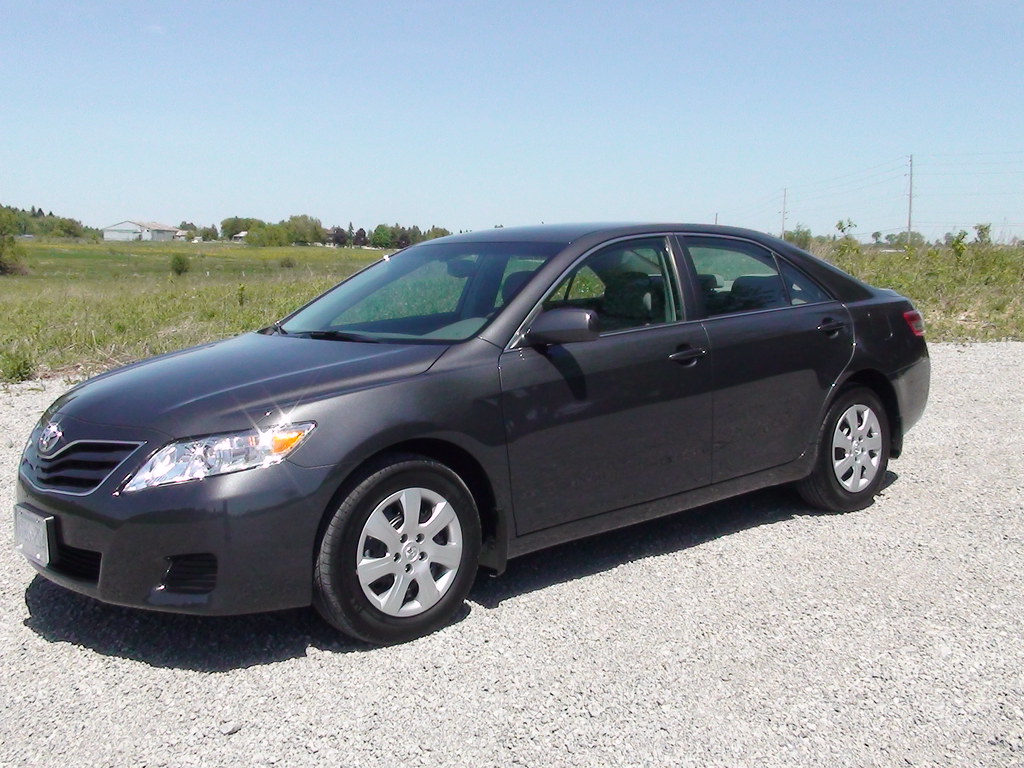
8. **Toyota Camry**
Now, if you thought the Corolla was a shocker, let’s talk about its slightly bigger sibling, the Toyota Camry. Often lauded for its smooth ride, comfort, and, you guessed it, legendary reliability, the Camry finds itself on this list not for aggressive antics, but for a more insidious form of road ‘rudeness’: a perceived lack of engagement and an almost Zen-like indifference to the flow of traffic.
One particularly seasoned driver, ‘jsinclair3939,’ who has logged “500 miles a week for the past 15 years,” didn’t mince words: “Top choice is Camry drivers but it’s spread to other Toyota sedans and crossovers in time.” This isn’t a fleeting observation but a consistent pattern witnessed over hundreds of thousands of miles, making it a truly relatable frustration for many on the highway.
The primary complaint? “They’re terrible drivers for going too slow and not being aware of faster moving traffic around them. They will camp in the left lane without a care.” It’s the kind of passive ‘rudeness’ that can build up a slow simmer of frustration in even the most patient drivers. This observation suggests that for many Camry owners, their purchase was “based on Consumer Reports or getting the most car for the money,” implying a pragmatic choice that might not prioritize an active, engaged driving experience. The result? A consistent tendency to disrupt traffic flow, making others take evasive action, proving that sometimes, being too slow can be just as ‘rude’ as being too fast.
Car Model Information: 2014 Toyota Camry SE
Name: Toyota Camry
Caption: 2018 Toyota Camry Ascent (ASV70, Australia)
Manufacturer: Toyota
Production: March 1982 – present
Aka: ubl
Class: ubl
Layout: ubl
Predecessor: ubl
Successor: Toyota Avensis (T250)
Categories: 1990s cars, 2000s cars, 2010s cars, 2020s cars, All-wheel-drive vehicles
Summary: The Toyota Camry (; Japanese: トヨタ・カムリ Toyota Kamuri) is an automobile sold internationally by the Japanese auto manufacturer Toyota since 1982, spanning multiple generations. Originally compact in size (narrow-body), the Camry has grown since the 1990s to fit the mid-size classification (wide-body)—although the two widths co-existed in that decade. Since the release of the wide-bodied versions, Camry has been extolled by Toyota as the firm’s second “world car” after the Corolla. As of 2022, the Camry is positioned above the Corolla and below the Avalon or Crown in several markets.
In Japan, the Camry was once exclusive to Toyota Corolla Store retail dealerships. Narrow-body cars also spawned a rebadged sibling in Japan, the Toyota Vista (トヨタ・ビスタ)—also introduced in 1982 and sold at Toyota Vista Store locations. Diesel fuel versions have previously retailed at Toyota Diesel Store. The Vista Ardeo was a wagon version of the Vista V50.
Get more information about: Toyota Camry
Buying a high-performing used car >>>
Brand: Toyota Model: Camry
Price: $12,961 Mileage: 114,203 mi.
Read more about: Unearthing Unexpected Value: 9 Economy Rides That Prove Affordability Doesn’t Mean Compromise
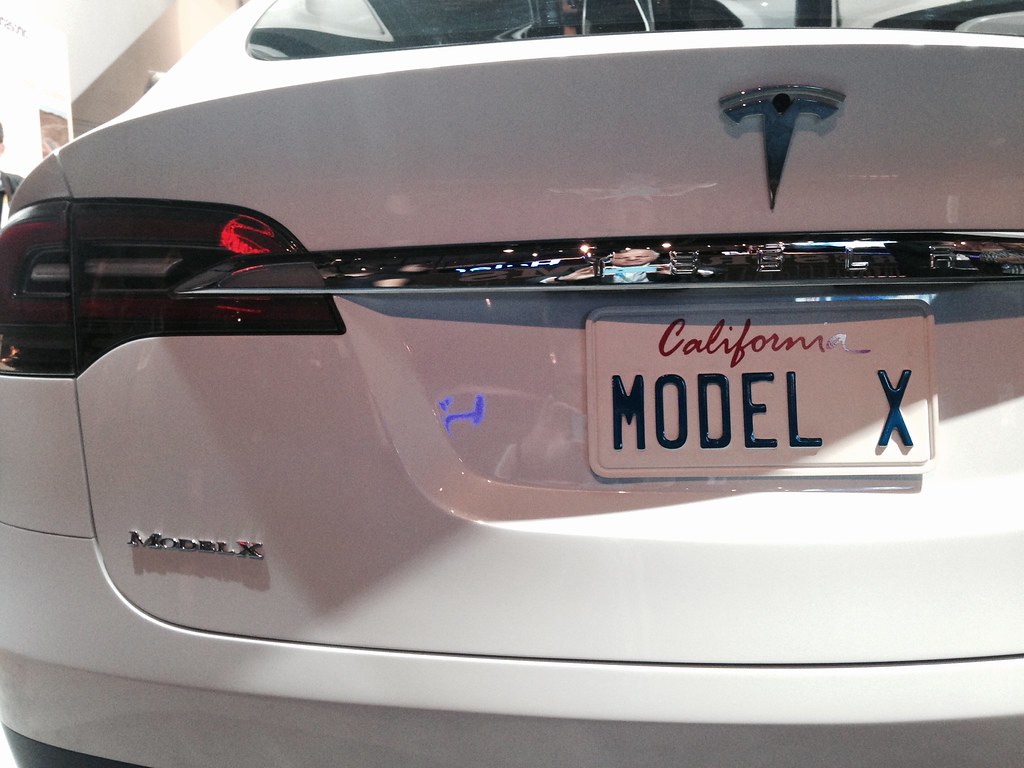
9. **Tesla**
Ah, Tesla. The future of driving, sleek, electric, and brimming with cutting-edge tech. You’d think a car so advanced would attract the most mindful and technologically savvy drivers, right? Well, according to some road-weary souls, the reality on the asphalt can be a bit… glitchy. It seems the drivers of these futuristic machines sometimes bring their own brand of peculiar road etiquette to the table.
‘darthspartan117’ offered a detailed, albeit anecdotal, breakdown of the Tesla driver experience: “I have never met a more clueless driver than Teslas. 1. the driving style: Nothing they do is smooth, it’s very twitchy and nervous, and with regen, they tend to slow down too fast when the conditions don’t dictate doing that.” This highlights a disconnect between the car’s smooth electric power and the jerky, hesitant maneuvers of its driver, making for an unpredictable presence on the road.
The observation continues, noting that “it’s like they are scared to drive up to speed in a quicker motion.” There’s a curious paradox where these incredibly fast cars are driven with an almost timid reluctance, as if their owners haven’t quite grasped the potential of their electric beasts. It suggests a lack of confidence that, when combined with rapid regenerative braking, can lead to unexpected slowdowns that catch other drivers off guard.
But the ‘cluelessness’ doesn’t stop there. ‘darthspartan117’ also zeroed in on navigational struggles: “most Teslas (and to the lesser people in general) seem to not know where they’re going…ever.” Even with “modern technology and unfettered access to freakin satellites,” these drivers are prone to slowing “down on a main road to a crawl, no signal or warnings, and slowly cut across lanes to get to the right one…just to realize that also wasn’t the lane they needed to be in.” It’s a frustrating scenario for anyone behind them, illustrating a significant gap in road awareness, even in the age of digital navigation.
Read more about: Unearthing Automotive Gold: 14 Surprise Gems That Blew Away All Expectations

10. **Dodge Challenger/Charger**
If there’s one thing the Dodge Challenger and Charger are designed for, it’s making a statement. With their muscular aesthetics and powerful engines, these cars practically scream “American muscle.” But sometimes, that powerful statement translates into a driving style that screams “rude” to everyone else on the road. It seems the sheer thrill of raw horsepower can be a little too intoxicating for some behind the wheel.
As ‘ceragan42′ boldly stated, “The most correct answer would likely be the Dodge Charger/Challenger, Ford Mustang, or Chevrolet Camaro — essentially, any domestic rear-wheel-drive car with moderate to high horsepower. These cars tend to attract drivers who enjoy aggressive acceleration and high-speed maneuvers.” This isn’t just about going fast; it’s about the *enjoyment* of pushing the limits, often at the expense of others’ peace of mind.
The allure of a powerful engine, the satisfying roar, and the temptation to burn rubber can create a heady mix that overrides good judgment. It’s almost like a built-in temptation to push the limits, especially among younger drivers or those experiencing a mid-life adrenaline rush. The perception is that these drivers view public roads as their personal drag strip, leading to behaviors like abrupt acceleration, sudden lane changes, and generally an attitude that says, “I’m in charge here,” which rarely makes friends in traffic.
Car Model Information: 2023 Dodge Challenger R/T Scat Pack Widebody
Name: Dodge Charger
Caption: 1969 Dodge Charger
Manufacturer: Dodge
Production: 1966–1978,1981–1987,2005–present
ModelYears: 1966–1978,1982–1987,2006–present
Categories: 1960s cars, 1970s cars, 1980s cars, 2000s cars, 2010s cars
Summary: The Dodge Charger is a model of automobile marketed by Dodge in various forms over eight generations since 1966.
The first Charger was a show car in 1964. A 1965 Charger II concept car resembled the 1966 production version.
In the United States, the Charger nameplate has been used on mid-size cars, personal luxury coupes, subcompact hatchbacks, and full-size sedans.
Get more information about: Dodge Charger
Buying a high-performing used car >>>
Brand: Dodge Model: Challenger/Charger
Price: $59,995 Mileage: 10,405 mi.
Read more about: From Anemic to Awkward: Unmasking 15 Muscle Cars That Truly Missed the Mark – And Why We Can’t Forget Them
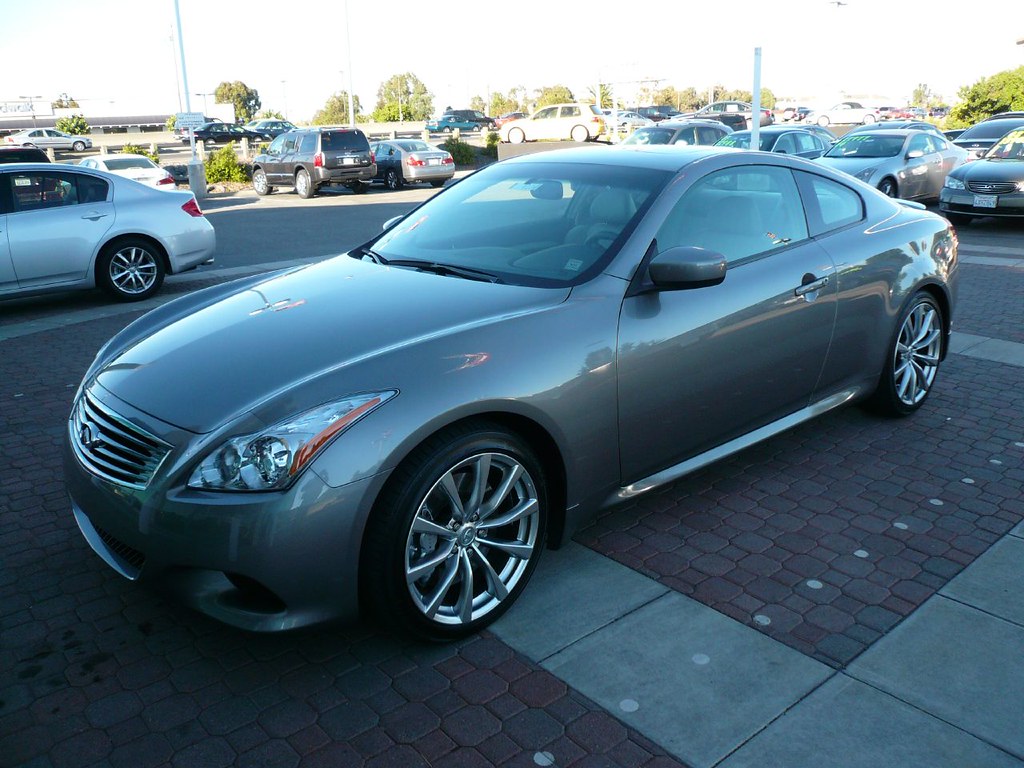
11. **Infiniti**
The Infiniti, a brand often associated with a blend of luxury and performance, seems to have developed a rather specific, and often contradictory, reputation on the roads. While some luxury cars are criticized for passive driving, Infiniti drivers appear to be associated with a unique mix of high-speed aggression and baffling indecision, making them truly stand out on our list of ‘rude’ cars.
‘disadvantage’ shared a concerning observation from a regular commute: “I drive I-580 West fairly regularly, and traffic is generally pretty light… except when there is an accident. And almost without fail, that accident includes an Infiniti, often times spun off the road because they thought they were badass weaving through traffic at 100+ mph.” This paints a vivid picture of excessive speed and reckless lane changes, leading to serious consequences. The perception here is a potent combination of overconfidence and a blatant disregard for safety.
But then, in a surprising twist, ‘disadvantage’ also listed a completely different set of behaviors: Prius (Prii?) drivers, and by extension, seemingly some Infiniti drivers, are “Always driving way below the speed limit, making random stops in the middle of the road, fading into your lane for no discernible reason, fumbling with their phones to handle their next Uber Eats delivery, and the poster car for ‘bad drivers never miss their exit’.” This creates a curious dichotomy: are Infiniti drivers speed demons, or are they distracted and slow? It seems they might be capable of both, presenting a multifaceted challenge on the road – either aggressively weaving or frustratingly oblivious, making them truly unpredictable.
Read more about: Unmasking the Speed Demons: A Deep Dive into the 13 Car Models Most Often Ticketed in the U.S.
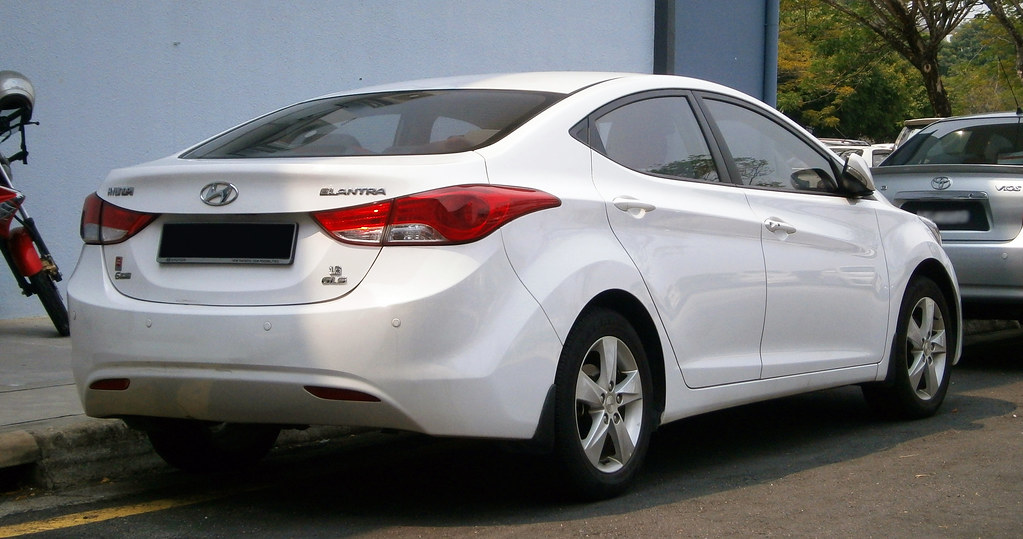
12. **Hyundai Elantra**
Last but certainly not least on our list of ‘rude’ cars is the Hyundai Elantra. This popular compact sedan, known for its value and modern styling, has, for some reason, become a magnet for a distinct set of aggressive and annoying driving habits. It’s as if owning an Elantra unlocks a secret level of road-warrior mentality that leaves other drivers utterly bewildered.
‘elgordo47’ laid out the Elantra driver’s playbook with remarkable clarity: “Get tailgated only to have the driver slow down to less than you were going in the first place once they’re ahead of you? Elantra driver. Clogged left lane? Elantra driver. Pass an Elantra diver? Insulted, so it’s a manhood race now.” This describes a highly competitive and often illogical approach to driving, where basic courtesy is thrown out the window in favor of perceived dominance or retaliation.
The specific examples highlight a pattern of aggressive posturing, such as the inexplicable slowing down after an aggressive pass, or turning every interaction into a “manhood race.” The observations continue, noting “Dark windows and go-fast stickers? Elantra. Constant lane changes in stopped traffic? You guessed it.” These are classic signs of drivers who prioritize their own perceived urgency and flashiness over the collective good of traffic flow. It’s a combination of aggressive impatience and an almost performative display of driving, making the Elantra a highly recognizable, and often frustrating, presence on our roads. It’s so prevalent that even ‘elgordo47’s wife, “who doesn’t really care about cars, can identify an Elantra in traffic now.”
Car Model Information: 2025 Hyundai ELANTRA SEL Sport
Name: Hyundai Elantra/Avante
Manufacturer: Hyundai Motor Company
Aka: Hyundai Avante,Hyundai Lantra (1990–2000, Australia and Europe),Hyundai i30 Sedan (2020–present, Australia)
Production: 1990–present
Class: Compact car
Layout: Front-engine, front-wheel-drive layout
Predecessor: Hyundai Stellar
Categories: 2000s cars, 2010s cars, 2020s cars, All Wikipedia articles written in British English, All articles with bare URLs for citations
Summary: The Hyundai Elantra (Korean: 현대 엘란트라), also known as the Hyundai Avante (Korean: 현대 아반떼), is a series of compact cars produced by the South Korean manufacturer Hyundai since 1990.
In South Korea, the first-generation model was initially sold under the “Elantra” nameplate, but starting from the second-generation, Korean models were sold under the “Avante” nameplate, with the “Elantra” name continue to be used on export models. The “Avante” name is not used in most export markets due to its similarity with Audi’s “Avant” designation, used for their station wagon models. As of 2018, Singapore is the only export market outside South Korea to utilize the “Avante” name.
In Australia and some European markets, the Elantra was initially marketed as the Lantra during its first two generations, due to the similarly named “Elante” trim for the Mitsubishi Magna in the former market, and the Lotus Elan in the latter. After Mitsubishi Motors Australia Limited (MMAL) dropped the “Elante” trim from the Magna range, and Lotus ceased production of the Elan in 1995, Hyundai standardized the “Elantra” name for both Australian and European markets in 2001, following the introduction of the third-generation model.
The first-generation model was also sold as the Bimantara Nenggala in Indonesia between 1995 and 1998. Since the seventh-generation, the “Elantra” name was retired in Australia, when Hyundai intergrated it into the i30 range, badging it as the i30 Sedan.
Get more information about: Hyundai Elantra
Buying a high-performing used car >>>
Brand: Hyundai Model: Elantra
Price: $20,681 Mileage: 14,803 mi.
Read more about: Unlocking the Secrets of Auto Theft: The 14 Most Common Ways Expensive Sports Cars and High-Value Vehicles Vanish in the U.S.
So, there you have it, folks! Our deep dive into the 12 vehicles that, according to the vast, wise, and wonderfully exasperated community of everyday drivers, have earned themselves a less-than-stellar reputation on the road. From the slow and unaware to the aggressive and blinker-averse, it’s clear that while the cars themselves are just machines, they sometimes seem to attract a certain… *je ne sais quoi* of driving personality. Whether it’s the car’s features, a cultural stereotype, or just sheer anecdotal coincidence, these vehicles have become synonymous with habits that make us all take a wider berth. Remember, it’s not always the car, but the driver behind the wheel. So, next time you’re out there, keep an eye out, stay safe, and maybe, just maybe, give that blinker a little flick. Happy (and hopefully less rude) driving!”

